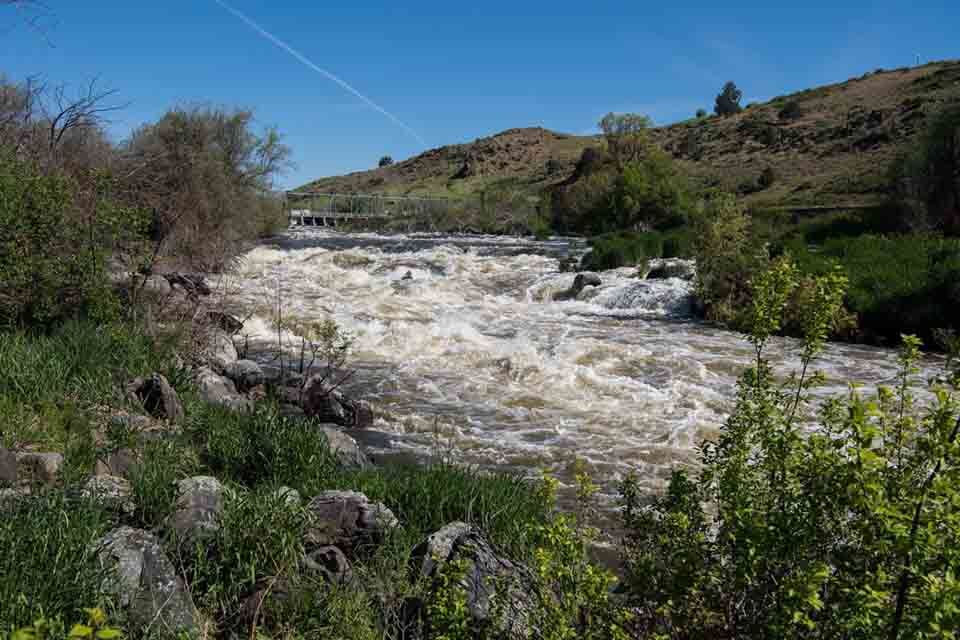Klamath Dam Breaches Near Completion: Salmon To Swim Freely For First Time In 100 Years

KLAMATH COUNTY, Ore. — As the biggest dam removal project in U.S. history nears completion, salmon will have a path to swim freely through a major watershed near the California-Oregon border.
This will be the first time in over a century they will be free as workers breach the last dams on a key section of the Klamath River.
Klamath Dam Breaches Near Completion
Once the third-largest salmon-producing river on the West Coast, after power company PacifiCorp built dams to generate electricity between 1918 and 1962, the natural flow of the Klamath River was halted, disrupting the life cycle of the area’s salmon, which returned to spawn in the river after spending most their life in the Pacific Ocean.
In 2002, the fish population again dwindled dramatically following low water and warm temperatures that caused a bacterial outbreak that killed over 34,000 fish, mostly Chinook salmon. Decades of advocacy from tribes and environmental groups that followed culminated in a plan by federal regulators to remove the dams in 2022.
Four large dams on the Klamath were set to be removed as part of a national movement to allow rivers to return to their natural flow, restoring ecosystems for fish and other wildlife. Copco No. 2 has been removed and work on dismantling the reservoirs of the other three dams started in March.
There are two smaller Klamath dams further upstream, but salmon can pass these dams via fish ladders- a series of pools that fish can jump through to get past a dam.
Power supply will not be affected by the removal of the dams. Less than 2% of PacifiCorp’s energy was produced by the dams.
Although hydroelectric power produced by dams is considered a clean, renewable energy source, several large Western dams have been under the spotlight by environmental groups and tribes because of the harm to fish and river ecosystems.
Salmon To Be Restored In Klamath River
The Klamath River Renewal Corporation’s chief executive, Mark Bransom, said after the Elwha dams were removed, the Lower Elwha Klallam Tribe took about a decade to start fishing again.
He said 100 years of damage to a river system can’t be undone overnight and there is no certainty over what the removals mean for the return of fish.
“I am excited to move into the restoration phase of the Klamath River,” Russell ‘Buster’ Attebery, chairman of the Karuk Tribe, is excited about the restoration and believes that by restoring hundreds of miles of spawning grounds, water quality will improve, supporting the return of their salmon- a sustainable, healthy food source for several Tribal Nations as well as being spiritually and culturally significant to many tribes in the region.
Frankie Myers, vice chairman for the Yurok Tribe, said taking care of the river is a sacred duty to their children, ancestors, and themselves. The day’s events fulfill this obligation. The tribe spent decades fighting to remove the dams and restore the river.
Although the project was expected to cost about $500 million- paid by taxpayers and PacifiCorp ratepayers, it’s uncertain how long it will take for the river to heal and the salmon to return.
The senior water policy analyst for the Yurok Tribe, Michael Belchik, is hopeful the salmon will get past the Iron Gate dam soon and that there will be early successes. He said, “I’m pretty confident we’ll see some fish going above the dam. If not this year, then for sure next year.”
